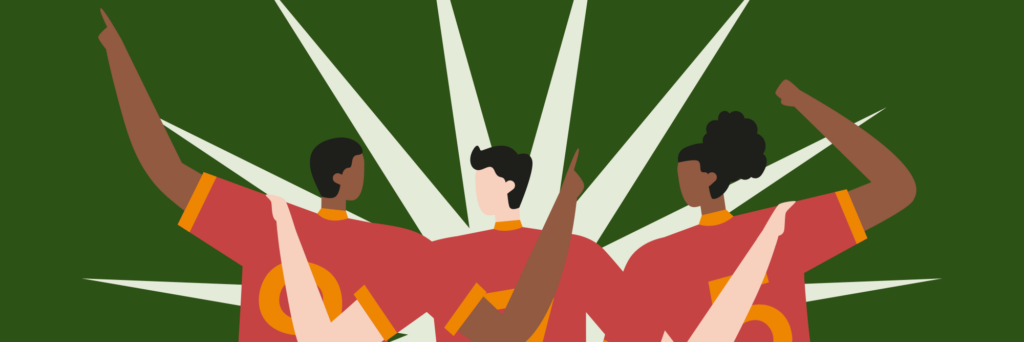It’s kickoff time for another COP. And the competition will be played under more adverse conditions than those encountered by the Brazilian national team in high-altitude games, like those in Quito or La Paz. After all, the climate is on the brink. Remember the floods in southern Brazil, the droughts in the Amazon, the wildfires in California? Well, the game has changed. But who’s talking strategy? Who’s setting the rules in this new playing field?
Let’s start with the basics: COP is an acronym for Conference of the Parties. What parties are we talking about? The 197 countries — plus the European Union — that signed on to the United Nations Framework Convention on Climate Change (UNFCCC). The main goal of the convention is to prevent human interference in the climate system. The COPs are yearly meetings where these countries decide how to go about that — it is as if football were in crisis and FIFA called a summit with all the national confederations to figure out how to fix the VAR system or how to stop bets from messing with the game.

COP30, to be held in Belém in November, marks ten years since the signing of the Paris Agreement (Art: Maia Mirian)
____
THE PLAYERS
Think of the 48 countries set to compete in the 2026 World Cup. Now multiply that by four. Welcome to the geopolitical chaos that is a COP: 198 parties (197 countries plus the European Union) and a crowd of observers. Among them are UN agencies, intergovernmental organizations, and NGOs. Which include private sector reps, environmentalists, scientists, and Indigenous peoples, among others.
_____
THE RULES OF THE GAME

The rules of the “climate game” were laid out in 2015, when countries signed the famous Paris Agreement under the UNFCCC. The deal set three major goals:
– Limit the Earth’s warming to well below 2oC compared to pre-industrial levels, making an effort to limit it to 1.5oC.
– Increasing humanity’s capacity to adapt to the impacts of climate change. In other words, creating mechanisms to avoid disasters such as those that occurred in Rio Grande do Sul in 2024.
– Aligning global financial flows with a low-emissions, high-resilience economy. Put simply: money. You can’t solve a global problem, caused mainly by the richest countries, without those rich countries financing a solution.
The Paris Agreement marked the first time that all countries committed to presenting their own climate targets (known as Nationally Determined Contributions, NDCs). From then on, each country must present its NDC as ambitiously as possible, just like a team presenting its line-up before a match. The sum of each country’s efforts should be enough to limit the Earth’s warming to 1.5oC. But so far, it hasn’t worked out. It’s a lack of fair play…
By the way, If you want to understand more about NDCs, take a look at this video:
_____
THE CHAMPION
The COP is like a World Cup where countries aren’t competing to beat each other, but to reach an agreement with one another. The major challenge is that this agreement must be unanimous, signed by all 198 parties. Everything is done by consensus — meaning, a deal is only approved when no one opposes it, so it can apply to all the signatory countries. Feel the drama? In other words, the COP may resemble a World Cup, but with a very different goal: unlike football, there is not one winner. The whole world needs to win. If not, everyone loses.
_____
COP30: THE COP OF COPS?

COP30, to be held in Belém, Pará, in November this year, carries a number of expectations. Firstly, it marks ten years since the Paris Agreement was signed. And why is this important? Because the signatory countries of the agreement committed to presenting their climate goals for the next ten years in 2025. According to scientists, by 2025, the world needs to cut greenhouse gas emissions by 65%. It’s up to the NDCs to reflect this.
If you want to know more about COP30, take a look at the sticker album that Central da COP has prepared with all the rules of the game and a list of the main climate athletes.
_____
THE CANARINHO TEAM

Brazil has as much tradition in the environmental struggle as it does in soccer. It is a climate leader, with the potential to advance the implementation of renewable energies, the decarbonization of the economy and the conservation of biodiversity. But the country’s biggest contribution to tackling the climate crisis lies in addressing the main cause of the problem: fossil fuels – oil, coal and natural gas, which account for an absurd 87% of global CO2 emissions. At COP28, countries agreed on the need to move away from fossil fuels in a fair, orderly, and equitable manner. But it’s still unclear how this will be executed. It’s up to Brazil to lead the negotiation of a timeline and define a path for the inevitable transition. Go get’em, Brazil!
_____
Want to know more about how the COP works? We explain (and make you laugh) in this video:
